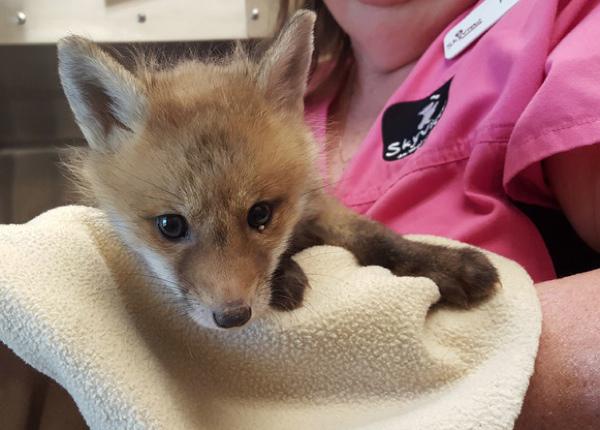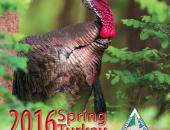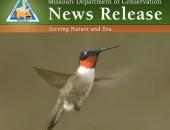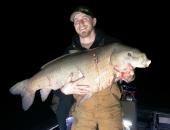Local News
This Fox Says Please Don't Litter
April 11th 2016 by Dee Loflin

“It could be the price of a ticket for the person who litters, or something as serious as a limb in this case,” said Bruce Henry, MDC’s natural history biologist for the Southeast Region. “There’s always a price for littering, it’s just a matter of who pays.”
Henry responded to a call today to a Cape Girardeau neighborhood, where a den of foxes had settled in under someone’s porch. When he arrived, he and the residents found a young red fox, about six to eight weeks old, under a nearby bush with a plastic bag wrapped around one of its rear legs.
“The plastic bag had wrapped so tightly, it was wound like twine around that leg,” Henry said.
Henry removed the bag from the leg and delivered the fox to Skyview Animal Clinic for treatment.
“In this case the leg must be amputated,” said Dr. Sean Byrd, a veterinarian at the clinic. “Because of the nature of the injury, it will heal very quickly.”
However, Dr. Byrd said the hard part for the young fox will be rehabilitation. It will transfer to Watkin’s Wildlife Rehab in Sedgewickville after surgery.
“We worry if it will be able to jump in order to catch its prey, because that’s an essential motion that a fox must be capable of,” Dr. Byrd said, adding that the young age of the fox is in the fox's favor, because it is still in the learning stage and it may be able to adapt.
“The chances of it being released back into the wild aren’t great, but that’s what we hope for,” Dr. Byrd said. “If not, it might be used as an education animal to serve as an example and educate people about the dangers of litter.”
Henry said the Cape Girardeau Conservation Nature Center needs volunteers this Saturday for a Riverfront Cleanup, which will directly help other local wildlife like the red fox. The cleanup is from nine to 11 a.m. at the Mississippi Riverfront in downtown Cape Girardeau, Cape Rock and Red Star Access. Another cleanup event is scheduled for Cape LaCroix Creek in Cape Girardeau April 23, from nine a.m. to noon.
“People don’t realize how important these cleanup events are until we look at an animal like this that gets caught in our mess,” Henry said. “He just paid an expensive price for someone else’s littering.”
Last Updated on April 11th 2016 by Dee Loflin
https://showmetimes.com/Blogpost/v4cl/This-Fox-Says-Please-Dont-Litter





